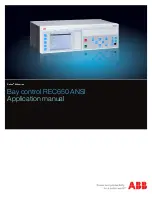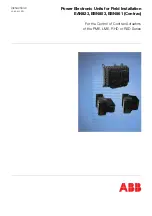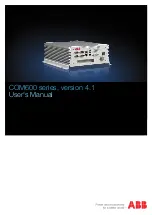
59
2.2.18 Contact P and N
The contact “positive transition P” activates the current flow for a single
scanning cycle at each transition Off / On. The contact “negative transition
N” activates the current flow for a single scanning cycle at each transition
On / Off. When the operation “positive transition P” detects a transition of
logic value from 0 to 1, it sets this value to 1, otherwise to 0. When the
operation “negative transition N” detects a transition of logic value from 1
to 0, it sets this value to 1, otherwise to 0.
2.2.19 Function SEND and mode Free-port
Function SEND allows to activate data transmission by means of serial
ports in mode free-port. In this mode, which can be activated by special
marker SM32, SM33 and SM34, the protocol which usually handles the
serial ports is disabled and the ports, as well as the relevant TX and RX
buffers, are controlled by the ladder program. After loading on buffer the
data to send and activating function SEND (which uses serial port and no.
of characters to send as parameters) these data will be sent on serial line.
During the transmission of data, bit SM0.7, SM0.7 or SM0.8 (according to
transmission port) will be set to “1”, while it will be set to “0” at the end of
transmission. It is possible to check the answer of a connected device by
means of SM35, SM36 and SM37, which contain the number of characters
received and saved on RX buffer of each serial port. Any writing on each of
these special marker will empty the RX buffer. Calls to function SEND
before the end of previous transmission or with mode free-port disabled will
be ignored by the program.
2.2.20 Function TunePOS and POS (positioning axis ON/OFF)
Function “TunePOS” completes the autotuning which is necessary to rate
reaction time and inactivity time of the axis on which a positioning
procedure is required. The function “POS” proceeds to the ON/OFF
positioning of an axis. Both functions operate on the same memory area
with double word access (area marker VD); the start address of the used
memory area is required as parameter by functions “TunePOS” and “POS”.
The following table shows how data is organized in the memory area used
by the two functions, starting from the address of specified location.
Содержание PL260
Страница 1: ...User manual...
Страница 2: ...2...
Страница 8: ...8 1 4 Size and installation 90 160 mm 43 53 5 45...














































